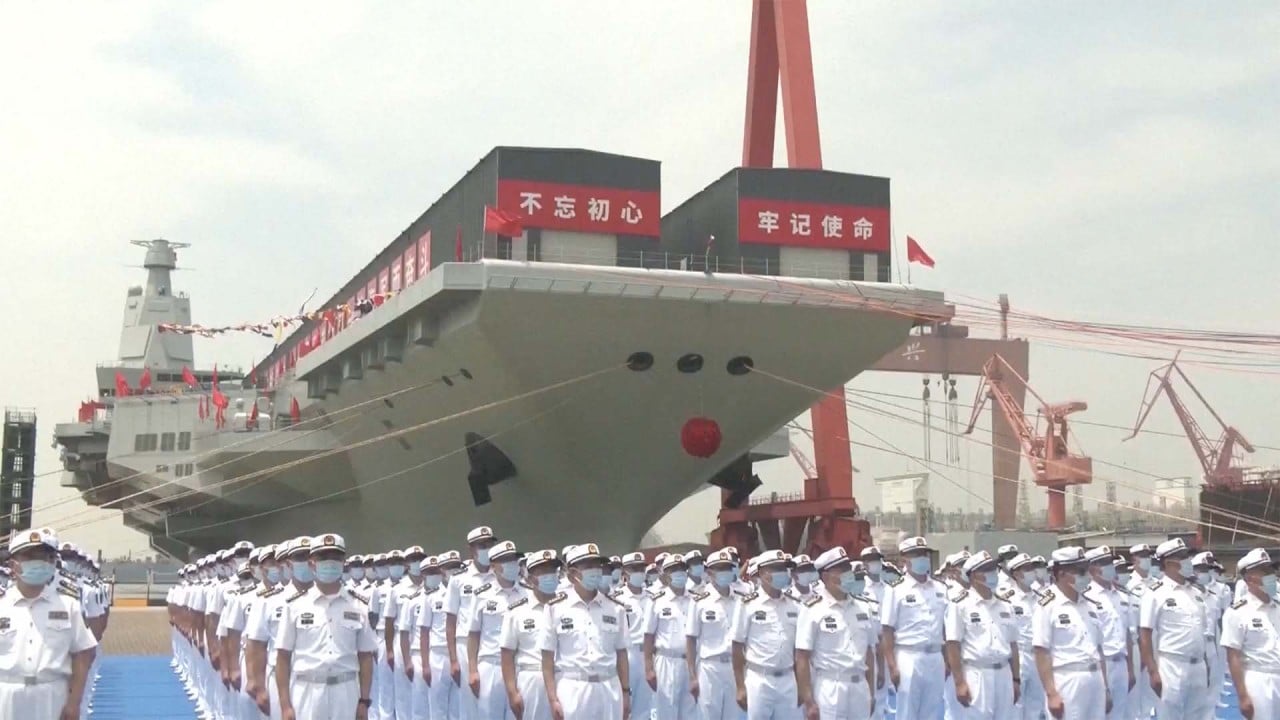
China gives first official look at Fujian aircraft carrier’s advanced catapult launch system
- Vessel appears in state news item on military’s response to president’s New Year national rejuvenation call
- The Fujian, the country’s first carrier with electromagnetic plane launch technology, last featured in state media in April
The CCTV evening newscast showed the Fujian, China’s first carrier to be fitted with electromagnetic catapults, pulled by three tugboats and with what appeared to be a J-15 fighter jet on its flight deck.
Featuring the aircraft carrier in such a high-profile programme could signal the state’s confidence in the vessel’s development.
The Liaoning and the Shandong, China’s first two aircraft carriers, launch planes using ski-jump take-off ramps. The Fujian’s catapults are powered by electromagnets that will allow planes to be launched more frequently and with more fuel and munitions.
The United States is the only other country with aircraft carriers equipped with the technology.
The footage also showed the Fujian away from its usual berthing position at Shanghai’s Jiangnan shipyard but it was not clear where.
According to satellite images, the carrier had returned in the past 10 days to the dry dock at the shipyard where it was built after being moved to a basin in June 2022.
Yin Hongxin, a Chinese navy officer, said in the report that the ship had undergone mooring tests “according to plan”.
The Fujian has yet to undergo sea trials to test its systems and components. In November, video clips were uploaded online apparently showing a dead-load test involving a wheeled vehicle being catapulted from the flight deck.
China’s Fujian carrier moves positions, stepping closer to sea trial: analysts
Song Zhongping, a former People’s Liberation Army instructor, said the Fujian was likely to be in dry dock for improvements after its mooring tests. It could also be moved so the hull could be cleaned and degaussed.
Degaussing neutralises the ship’s magnetic field, which if left unchecked makes it easier for magnetic-sensitive weapons and sensors to detect the vessel.
“The sea trial mission is important, so the Fujian will not be in dock for long,” Song said.
He would not speculate on how long the Fujian would stay at the shipyard, but said that would depend on the amount of work to be done on the carrier.

The CCTV report also showed scaffolding on the Fujian’s command centre “island” structure. The flight deck is also yet to be painted.
The Fujian, a Type 003 carrier, was launched in 2022. Its completion would bring China closer to its goal of building a blue-water navy that can operate in the open ocean, and its target of at least six aircraft carrier battle groups by 2035.
The PLA also uses aircraft carriers in operations targeting Taiwan, which Beijing says must be unified with mainland China, by force if necessary.
Most countries, including the US, do not recognise Taiwan as an independent state. The US is obliged under its law to help Taiwan defend itself.


